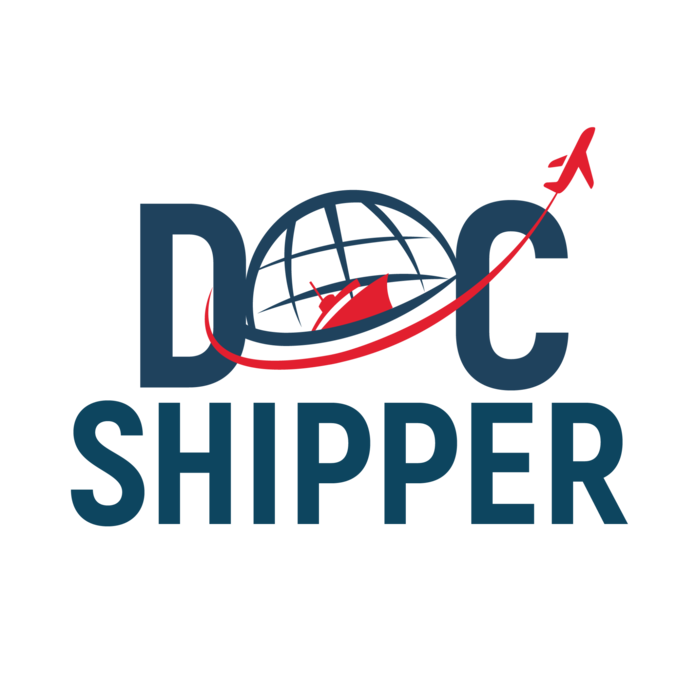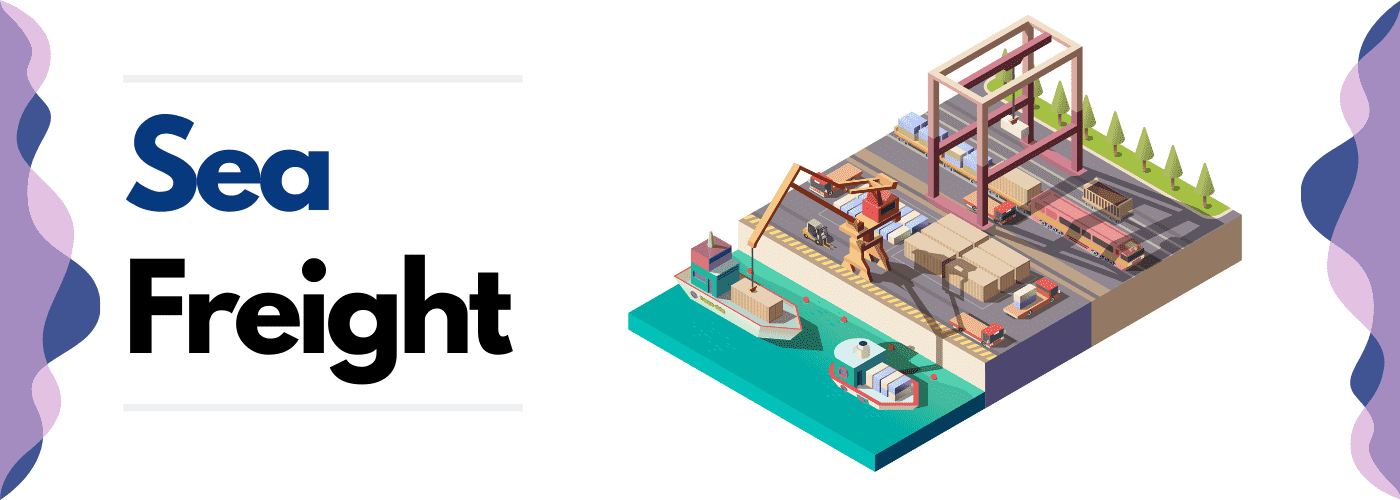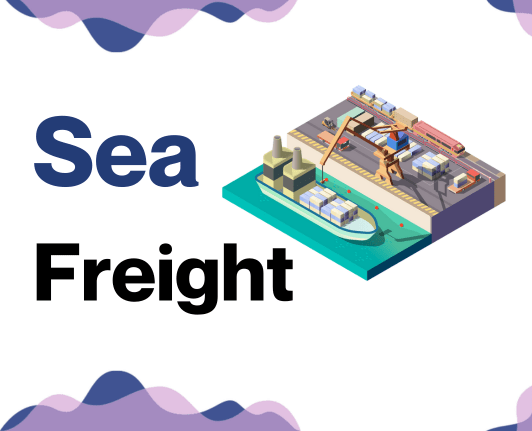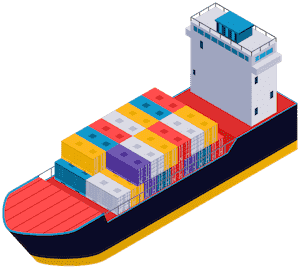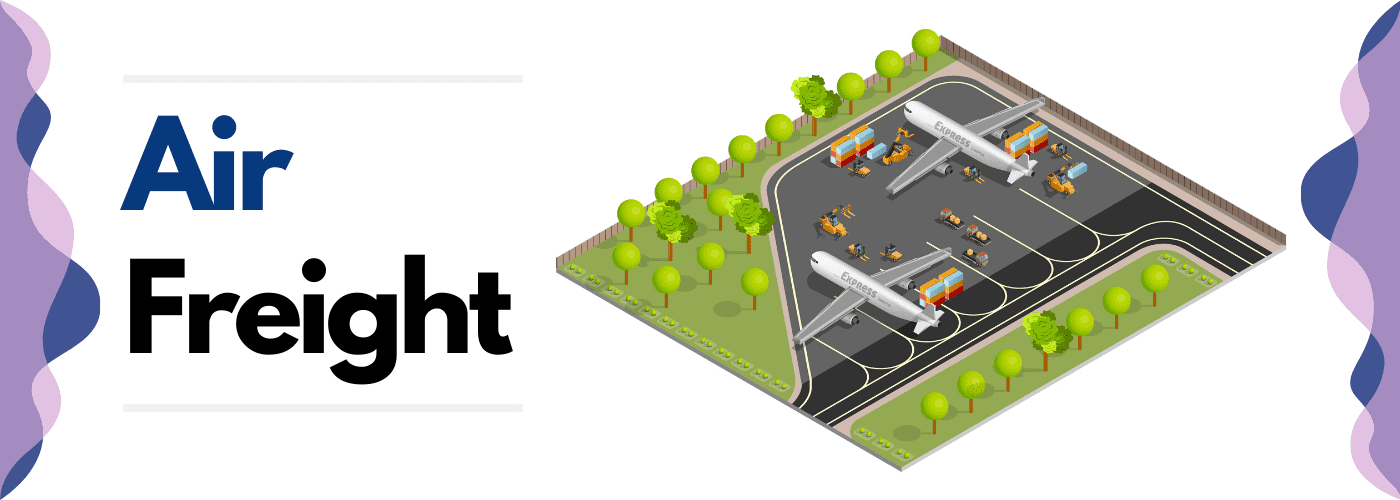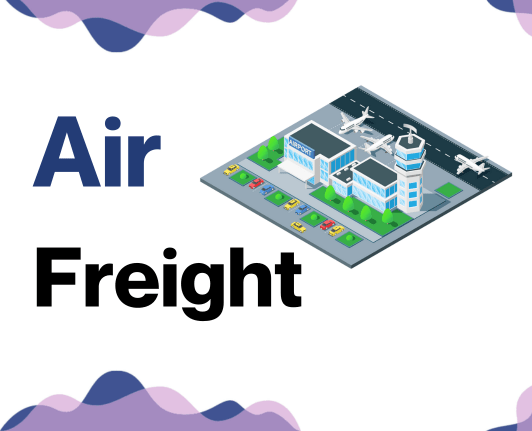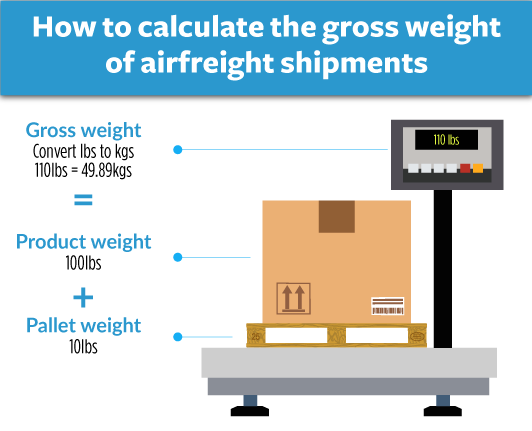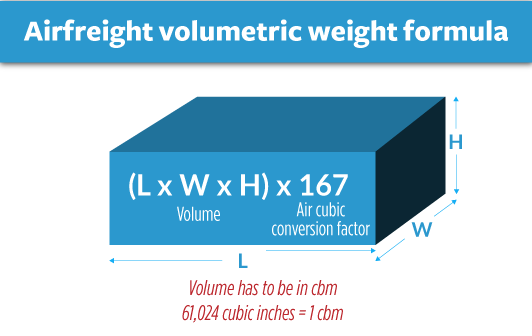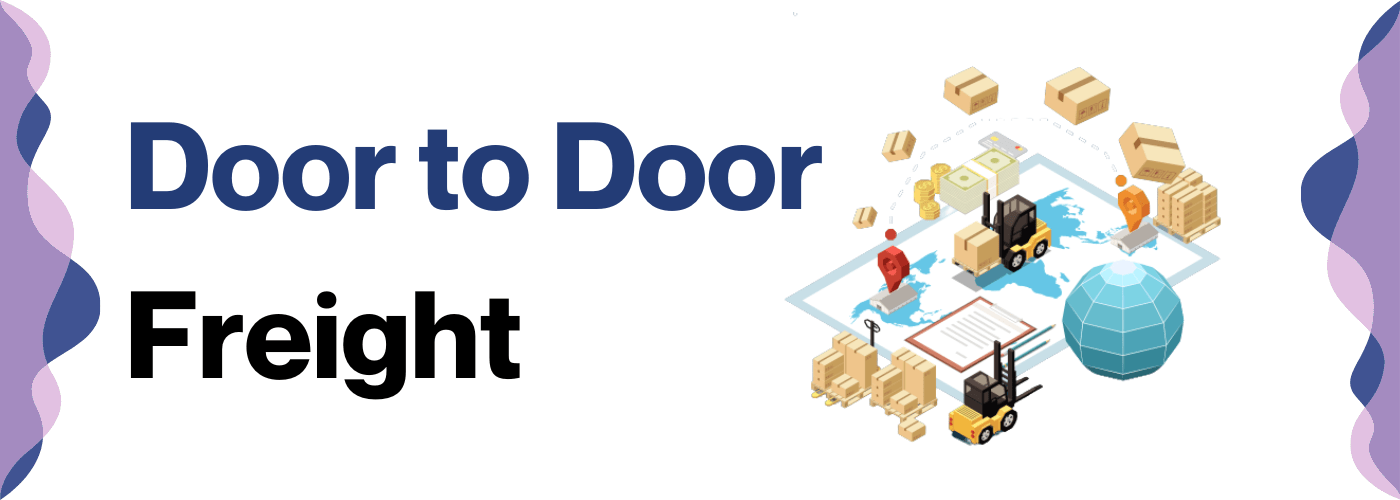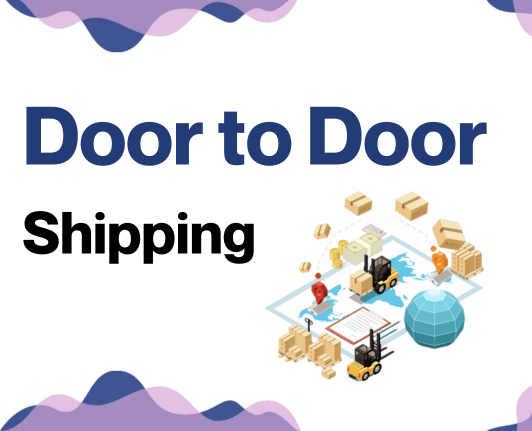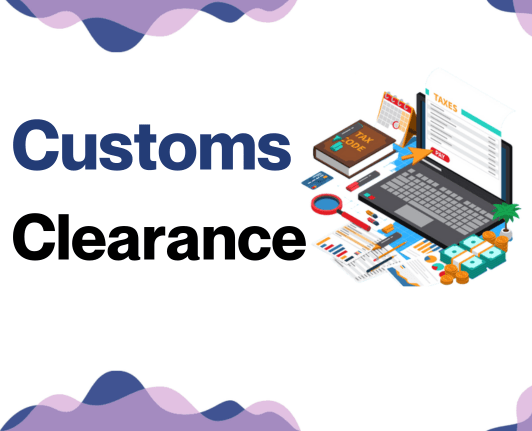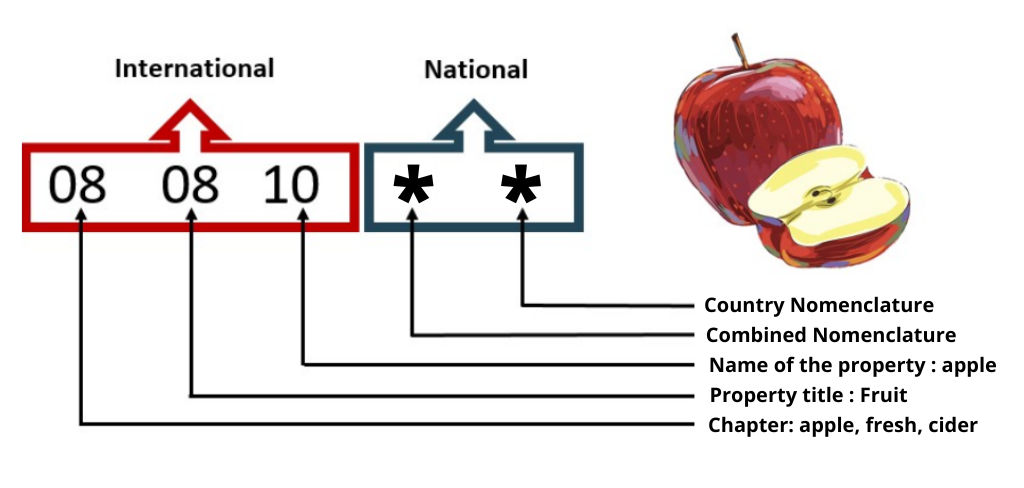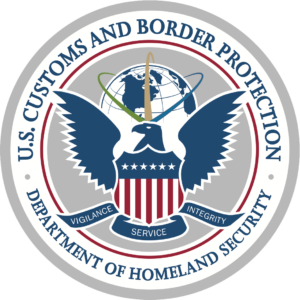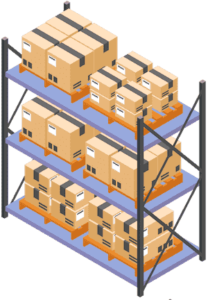Shipping from the USA to Kuwait?
Well, it's no more complicated than assembling furniture from a certain Swedish company! But for many, understanding rates, transit times, and customs regulations may pose a dilemma. This comprehensive guide is targeted at easing this task and breaking things down into bite-size chunks. You'll learn about various freight options – be it sea, air, road, or rail. We'll also illuminate the seemingly opaque world of customs clearance processes, duties, and taxes involved. Plus, there'll be plenty of shipping advice geared for businesses. If the process still feels overwhelming, let DocShipper handle it for you! As an international freight forwarder, we turn such challenges into business victories, carrying out all necessary steps in the shipping process, just for you.
Table of Contents
ToggleWhich are the different modes of transportation between US and Koweit?
Choosing the right transit method for your freight between the US and Kuwait is like solving a puzzle: The distance, the vast ocean, and custom rules all add different shapes to the mix. Here is your cheat sheet: Air freight offers speed, while ocean transit brings cost-effectiveness. Road and rail, however, often face speed bumps due to long overland routes and international laws. So, it’s time to pick the pieces that fit your business best - the 'fast-plane' or the 'slow-ship'! Let’s dive deeper to see which method aligns best with your unique shipping needs and challenges.
How can DocShipper help?
Encountering complexities in shipping goods between the US and Kuwait? DocShipper is your ally, simplifying the logistics maze from customs clearance to transport organization. Don't be left adrift in the rough shipping seas. Reach out for your free estimate in less than 24 hours or call our consultants anytime for free. Make your international shipping painless with DocShipper!
DocShipper Tip: Sea freight might be the best solution for you if:
- You are shipping large volumes or bulky items, as sea freight offers the most space at a cost-effective rate.
- Your cargo doesn't have an urgent deadline, as sea freight typically has longer transit times compared to air or rail.
- Your shipping routes are between major ports, allowing you to leverage the extensive global network of sea shipping lanes.
Sea freight between US and Koweit
Sea lanes connecting the United States and Kuwait have been bustling with activity, bridging industries across thousands of miles. With prominent ports like Los Angeles and Shuwaikh serving as springboards, it's like playing connect-the-dots between key industrial centers. Despite the longer journey time, ocean shipping remains a wallet-friendly choice for high-volume goods - it's like sending your merchandise on an extended vacation without breaking the bank!
However, this international maritime journey isn't always plain sailing. Shippers often find themselves tangled in a sea of paperwork, complex regulations, and unexpected costs. Like navigating a ship through a storm, ensuring a successful delivery can be daunting for the untrained. But fear not, there's a roadmap to smooth sailing. This section presents the best maritime shipping practices between the US and Kuwait, with pointers that serve as metaphorical navigation beacons. Armed with insights from seasoned sea captains, you'll avoid common pitfalls and learn to steer clear of potential storms. Your cargo's transoceanic journey just got a whole lot easier!
Main shipping ports in US
Port of Los Angeles:
Located in Los Angeles, California, this port is a critical gateway for international trade, with a shipping volume of over 9.2 million TEU in 2020. This makes it the busiest port in the United States by container volume. Key trading partners include China, Hong Kong, Japan, South Korea, and Vietnam. Strategically, the Port of Los Angeles provides significant value by linking larger-volume shipping routes, especially those connected to Asia. If you're seeking to venture into the dynamic Asian market, the Port of Los Angeles should be a prime consideration for your shipping routes, providing you with vast connections and the capacity to handle high volumes.
Port of Long Beach:
Situated adjoining the Port of Los Angeles, the Port of Long Beach had a shipping volume of 8.11 million TEU in 2020. Its key trading partners also include Asian powerhouses like China, South Korea, Japan and emerging markets in Southeast Asia. Ambient advantages include being one of the most technologically advanced ports in the U.S. As a business seeking to optimize your supply chain, lean on the Port of Long Beach's modern infrastructure and efficient handling capabilities, which simplify procedures and minimize delays.
Port of New York and New Jersey:
Perched on the East Coast, this port handled approximately 7.6 million TEU in 2020 and is one of the critical gateways for goods entering the U.S. from Europe. Key trade partners include China, India, Germany, and Brazil. If your business operations cater to European markets or fast-growing economies like India, integrating the Port of New York and New Jersey into your shipping strategy would provide strategic connectivity to these markets.
Port of Savannah
The Port of Savannah, located in Georgia, saw over 4.6 million TEU pass through its facilities in 2020. Key trading partners include China, Germany, and Vietnam. Its strategic importance derives from its close location to the southeastern U.S., making it an ideal point of entry or exit for goods traveling to/from this region. For businesses focusing on the Southeast market, the Port of Savannah's geographical advantage can lead to reduced shipping times and costs.
Port of Seattle:
This Pacific Northwest location handled around 3.7 million TEU in 2020. Key trading partners include China, Japan, South Korea, and Taiwan.
It is an anchor point in U.S.-Canada trade and is in close proximity to Alaska. If your business deals heavily with North American partners, specifically Canada or Alaska, the Port of Seattle is a strategic addition to your shipping strategy.
Port of Houston:
This Texas-based port handled over 2.99 million TEU in 2020. Key trade partners include China, Mexico, Brazil, The Netherlands, and South Korea. Strategically, it's the busiest port in the U.S. in terms of foreign tonnage and connects to interior U.S. via railways and interstates making it ideal for you if your business seeks connectivity to central and southern U.S. markets.
Main shipping ports in Koweit
Port of Shuwaikh
Location and Volume: Positioned in Kuwait City, the Port of Shuwaikh has a strategic location as the main commercial port of Kuwait. It manages a significant shipping volume, with an annual handling capacity of over 18 million tons.
Key Trading Partners and Strategic Importance: Shuwaikh plays a crucial role in Kuwait's international trade, with significant import and export activities involving India, the United Arab Emirates, Saudi Arabia, and China. Its strategic importance lies in its size - it's the largest port in the country, with 21 berths.
Context for Businesses: If your company aims to break into the Kuwaiti market or if your trading partners are predominantly in the Gulf region, the Port of Shuwaikh can be a pivotal part of your logistics strategy due to its extensive international trade connections and potential for large shipping volumes.
Port of Shuaiba
Location and Volume: The Port of Shuaiba is located in the southern region of Kuwait and specializes in the handling of cargo related to the country’s thriving oil industry. With a mix of multiple berths for container and bulk cargo, Shuaiba contributes significantly to Kuwait's shipping activities.
Key Trading Partners and Strategic Importance: Shuaiba caters predominantly to industrial shipments, especially oil-related cargo. It has strong shipping ties with countries like China, Singapore, Japan, India, and Saudi Arabia.
Context for Businesses: If your business involves the oil and gas industry or needs access to the southern region of Kuwait, incorporating the Port of Shuaiba into your shipping plan can prove beneficial. Its expertise in oil-related cargo ensures safe and efficient handling of such shipments.
Port of Doha
Location and Volume: The Port of Doha, located in Kuwait's capital, operates with a focus on handling local cargo. This port is a key player for internal logistics and for distribution of imported goods across Kuwait.
Key Trading Partners and Strategic Importance: With its focus primarily on domestic transport, Port of Doha's main trading partners are local utilities and logistics companies. Its strategic importance is mainly national, serving as a hub for the distribution of imported goods across Kuwait.
Context for Businesses: If your business heavily involves the domestic market within Kuwait, the Port of Doha could be an ideal solution to ensure goods are efficiently distributed across the country. Its local logistical prowess makes it an excellent choice for inter-Kuwait shipping.
Should I choose FCL or LCL when shipping between US and Koweit?
Pondering over the best way to ship your goods between the US and Kuwait? Your answer lies in understanding two key ocean freight options: Full Container Load (FCL) and Less than Container Load (LCL), or consolidation. The choice can greatly affect your shipping costs, delivery times, and overall efficiency. Read on to learn about these options and make a strategic, informed decision that aligns with your shipping needs. Let's lift the fog from sea freight shipping!
LCL: Less than Container Load
Definition: Less than Container Load (LCL) shipping encapsulates the movement of smaller quantities of cargo - fractions of a full container shipment. It's often grouped with other shipments to optimize container space efficiently.
When to Use: LCL is your go-to choice when your cargo isn't enough to fill an entire container. Typical cutoffs are around 13 to 15 Cubic Meters (CBM). The flexibility and pricing of LCL make it ideal for small volume shipments.
Example: Let's say your business manufactures artisanal ceramics in the US and frequently ships small batches to exhibition centers in Kuwait. Due to the volume, filling an entire container isn't feasible. Instead, you use LCL shipping, which can handle your lower volume orders effectively, ensuring the shipment arrives at the scheduled exhibition without excessive cost.
Cost Implications: The cost of an LCL shipment depends on the volume of goods you're shipping - you essentially pay for the space your cargo takes up. It's often more affordable than other methods when dealing with lower volumes. Remember, though, that it includes other costs, such as the LCL freight cost, to transport your goods from the warehouse to the destination port.
FCL: Full Container Load
Definition: FCL, or Full Container Load, is a type of shipping mode where a company reserves an entire container for their goods alone, which could be a 20'ft or 40'ft container.
When to Use: It's typically the best choice when you have a high-volume shipment, specifically more than 13/14/15 CBM. FCL shipping provides additional safety as the container is sealed at origin and isn't opened until it arrives at its destination, reducing the risk of cargo damage.
Example: For example, a furniture manufacturer based in the US shipping a large order to a retailer in Kuwait would likely choose FCL. It's cheaper for high-volume shipments and keeps the furniture protected within its own sealed container.
Cost Implications: The cost of FCL shipping is more predictable compared to LCL. You'll pay a flat rate for the entire container, whether it's fully loaded or not. Remember, staying aware of the per CBM cost in an FCL shipping quote is key to ensuring this remains the economical choice. FCL containers can offer significant savings for high-volume shipments.
Unlock hassle-free shipping
Moving goods between the US and Kuwait just got easier with DocShipper's expert freight-forwarding services. Struggling to decide between consolidation or a full container? Our seasoned ocean freight specialists consider factors like cost-effectiveness, shipment size, and product nature to guide you through the decision. Allow us to streamline your shipping process, making it as straightforward as possible. Ready to take the next step? Reach out now for your free estimation. Discover the hassle-free way to ship!
How long does sea freight take between US and Koweit?
The average sea freight journey between the US and Kuwait takes approximately 40-55 days, although this can vary. Transit times are based on several factors, including the specific ports used, the weight of the shipment, and the nature of the shipped goods. For an accurate estimate tailored to your unique needs, we recommend you reach out to freight forwarders like DocShipper.
Here's a rough guide to the transit times between key ports in both countries:
| Port in the US | Port in Kuwait | Average Transit Time (in days) |
| Port of Los Angeles | Shuwaikh Port | 23 to 27 |
| Port of New York | Shuwaikh Port | 30 to 35 |
| Port of Houston | Shuwaikh Port | 28 to 32 |
| Port of Savannah | Shuwaikh Port | 32 to 36 |
*Please remember these are just estimates. For a precise quote, do get in touch with a trusted freight forwarder.
How much does it cost to ship a container between US and Koweit?
Crunching precise numbers for shipping costs between the US and Kuwait is like capturing a cloud - it's ever-changing! Ocean freight rates, the points of loading and destination, chosen carriers, and the nature of your goods mingle and dance with monthly market fluctuations, creating a complex but exciting shipping cost symphony. Fear not! No two shipping journeys are alike, and our expert shipping specialists are committed to quoting you the best rates, tailored to your distinct shipping situation. Let's navigate this symphony together and find a melody that sings to your business needs. Remember, quality shipping doesn't mean breaking the bank!
Special transportation services
Out of Gauge (OOG) Container
Definition: An Out of Gauge (OOG) container is designed to transport oversized cargo that exceeds the dimensions of standard sea shipping containers.
Suitable for: Large machinery, vehicles, oversized equipment, and other items that require unique dimensions due to their irregular size or weight.
Examples: Industrial machinery, construction equipment, yachts.
Why it might be the best choice for you: If your cargo doesn't fit within the dimensions of regular containers, an OOG container provides a secure and efficient vessel for your out of gauge cargo needs.
Break Bulk
Definition: Break bulk freight involves individual items being loaded onto a ship without the use of a container. Pallets, barrels, or bags might be used to group small items together.
Suitable for: Various types of merchandise that aren't containerized such as timber, steel or project cargo.
Examples: Oil drums, construction iron, wooden logs.
Why it might be the best choice for you: Break bulk allows for greater flexibility in handling different types of cargo, especially when dealing with loose cargo load.
Dry Bulk
Definition: Dry bulk refers to granular materials shipped in large quantities, and are usually poured into cargo spaces without any packaging.
Suitable for: Bulk commodities such as coal, grain, iron ore or aggregates.
Examples: Wheat, coal, or sand.
Why it might be the best choice for you: If you're shipping large quantities of non-packaged, dry commodities, Dry bulk is a cost-efficient and convenient option.
Roll-on/Roll-off (Ro-Ro)
Definition: The Roll-on/Roll-off (Ro-Ro) method is a type of ocean freight, where a cargo vehicle can be driven on and off a ro-ro vessel.
Suitable for: Wheeled cargo like cars, buses, trucks and heavy machinery on wheels.
Examples: Exporting cars, mobile cranes or RVs.
Why it might be the best choice for you: The Ro-Ro method simplifies the freight process by eliminating the need for cranes or other heavy equipment to load and unload the cargo.
Reefer Containers
Definition: Reefer containers are a type of shipping container that is refrigerated and used to transport temperature sensitive cargo.
Suitable for: Perishable goods such as fruits, vegetables, dairy products, or medicinal products.
Examples: Fresh produce, seafood, pharmaceuticals, plants.
Why it might be the best choice for you: If you're in an industry dealing with perishable goods that need to be shipped at a specific temperature, reefer containers control interior temperatures to help ensure your cargo arrives in optimal condition.
Remember, every shipping requirement is unique, and finding the right method can be a complex process. At DocShipper, we are here to simplify your shipping needs between the US and Koweit. For a free shipping quote in less than 24 hours, feel free to contact us.
DocShipper Tip: Air freight might be the best solution for you if:
- You are in a hurry or have a strict deadline requirement, as air freight offers the fastest transit times.
- Your cargo is less than 2 CBM (Cubic Meter), making it more suitable for smaller shipments.
- Your shipment needs to reach a destination that is not easily accessible by sea or rail, allowing you to tap into the extensive network of global airports.
Air freight between US and Koweit
Air freight from the US to Kuwait is like catching a non-stop sprint. It’s swift, steadfast, and extremely efficient, especially for small, high-value items like electronics or designer goods. Think of it like sending a precious package overnight - you don't mind paying that little extra for peace of mind and prompt delivery.
However, the world of air freight isn't all plain sailing. Missteps often arise when businesses overlook crucial details; for instance, misjudging shipment weight could significantly bump up costs. Imagine you're sending a feather-filled pillow – it might be light, but its size could make your freight charges skyrocket. Similarly, not knowing the ins and outs of air freight can be as damaging as steering a plane in a fog. Without the right techniques up your sleeve, you could end up paying through the nose. In this segment, we'll shed light on these common pitfalls, helping you fly clear of these costly thunderclouds.
Air Cargo vs Express Air Freight: How should I ship?
Deciding on the shipping method for your goods from the US to Kuwait? You're likely debating between Air Cargo and Express Air Freight. Here's a simplifier: Air Cargo uses space in regular passenger airlines, while Express is like getting a private jet for your shipment. We understand your unique business needs, so let's dive into the nitty-gritty and ascertain which option suits your goods and timelines best.
Should I choose Air Cargo between US and Koweit?
As a business aiming to transport freight between the US and Kuwait, you may want to consider air cargo. International airlines like Delta Cargo and Kuwait Airways offer reliable services. Despite longer transit times due to fixed schedules, it's a cost-effective method, especially for freight over 100-150 kg (220-330 lbs). The higher costs of air shipments may offset with faster delivery and less packaging required, suiting your budget needs. Learn more by visiting Delta Cargo and Kuwait Airways.
Should I choose Express Air Freight between US and Koweit?
Express air freight, a service employing cargo planes designed solely for freight, offers a fast and reliable solution for your goods. If your shipment weights below 100/150 kg (220/330 lbs), or is under 1 cubic meter (CBM), it could be ideal. Prestigious international couriers such as FedEx, UPS, and DHL excel in providing these services. They ensure swift, efficient delivery with full tracking, often within mere days. This option minimizes transit time, making it ideal for urgent orders or temperature-sensitive goods. By choosing express air freight, you're prioritizing speed and reliability for your US-Kuwait shipping needs.
Main international airports in US
Los Angeles International Airport (LAX)
Cargo Volume: In 2019, LAX managed over 2.21 million metric tons of air cargo.
Key Trading Partners: Primarily connects with Asia, Europe, and Latin America.
Strategic Importance: Located on the U.S. West Coast, LAX plays a crucial role in trans-Pacific trade.
Notable Features: Known for its cargo-friendly infrastructure, comprehensive customs facilities, and efficient handling of diverse goods.
For Your Business: If your trade majorly focuses on Asian or Latin American markets, LAX could be an ideal choice due to its strong global links and efficient cargo handling.
John F. Kennedy International Airport (JFK)
Cargo Volume: JFK handled over 1.3 million metric tons of cargo in 2019.
Key Trading Partners: Mainly Europe, Asia, and South America.
Strategic Importance: Located in New York, JFK provides access to one of the most economically powerful cities in the world.
Notable Features: Known for its dedicated cargo terminals, efficient customs procedures, and extensive storage facilities.
For Your Business: If your business needs to reach European or South American markets quickly or requires connection to a powerful domestic market, consider JFK as a primary cargo airport.
Miami International Airport (MIA)
Cargo Volume: MIA facilitated over 2.3 million tons of freight in 2019.
Key Trading Partners: Particularly strong links with Latin America and the Caribbean.
Strategic Importance: As one of the largest cargo airports in the U.S., MIA serves as the primary international freight gateway to Latin America.
Notable Features: It hosts the world's largest concentration of international freight forwarders and customs brokers.
For Your Business: If your business predominantly trades with Latin American or Caribbean nations, MIA provides unparalleled access and specialized customer broker services.
Chicago O’Hare International Airport (ORD)
Cargo Volume: In 2019, ORD oversaw the transfer of 1.8 million metric tons of cargo.
Key Trading Partners: It has broad connections but is strongly linked with Europe and Asia.
Strategic Importance: Located in the American Midwest, ORD offers domestic as well as international accessibility.
Notable Features: Features a state-of-the-art cargo center known as Northeast Cargo.
For Your Business: If your business requires extensive domestic connectivity or caters to Asian and European markets, ORD may be an optimal choice.
Memphis International Airport (MEM)
Cargo Volume: MEM handled over 4.3 million metric tons of cargo in 2019, making it the busiest cargo airport in the U.S.
Key Trading Partners: Primarily domestic U.S. connections.
Strategic Importance: As the global air hub for FedEx Express, MEM plays a central role in express cargo shipping.
Notable Features: Known for high-speed freight services and round-the-clock operations.
For Your Business: If domestic shipping plays a dominant role in your business and you require fast, reliable service, MEM's links with FedEx could provide unparalleled benefits.
Main international airports in Koweit
Kuwait International Airport
Cargo Volume: Kuwait International Airport handles over 215,000 tons of freight per year, making it a vital gateway for goods entering and exiting Kuwait.
Key Trading Partners: Key trading partners include Middle East countries, the USA, Germany, China and Japan. It serves as a vital intermediate point between Asia, Africa and Europe.
Strategic Importance: Situated in Al Farwaniyah, Kuwait’s most populous city, this airport serves as the hub for Kuwait Airways and Jazeera Airways, connecting Kuwait to numerous international locations.
Notable Features: Facilities at Kuwait International Airport include special handling services - with provision for oversized and dangerous cargo - 24/7 operational capabilities, and bonded warehouse facilities.
For Your Business: Given its broad connections and special handling services, Kuwait International Airport may be an efficient option for your business particularly if your cargo requires special handling.
Al Mubarak Air Base
Cargo Volume: Not as bustling as Kuwait International Airport, but critical in its own right, Al Mubarak Air Base handles a significant volume of cargo, especially during peak seasons.
Key Trading Partners: Its trading partners are largely similar to those of Kuwait International Airport due to its close proximity.
Strategic Importance: Al Mubarak Air Base is strategically located near major highways that lead to Saudi Arabia and Iraq, providing easy onward transportation.
Notable Features: Al Mubarak Air Base has extensive cargo handling facilities and a skilled workforce who ensure cargo is moved efficiently.
For Your Business: If your business caters to peak demand periods or you require easy access to Saudi Arabia or Iraq, Al Mubarak Air Base may be a good choice for your air freight needs.
How long does air freight take between US and Koweit?
Air shipping from the U.S to Kuwait typically takes between 1 and 3 days. However, specific transit times could fluctuate depending on factors such as exact departure and arrival airports, cargo weight, and the nature of the goods shipped. Hence, to ensure the most accurate timelines for your shipments, it's highly recommended to consult with your trusted freight forwarder like DocShipper.
How much does it cost to ship a parcel between US and Koweit with air freight?
Air freight shipping rates between the US and Koweit can range widely, anywhere from $3 to $10 per kilogram. This rate fluctuates due to an assortment of factors including distance to the departure and arrival airports, package dimensions and weight, and the nature of the goods being shipped. Please note that these are very general estimates and the exact pricing can only be provided after a comprehensive review. At our company, we'll help you navigate these complexities, ensuring you receive the best possible rate, tailored specifically for your shipping needs. Don't hesitate to reach out – we offer free quotes in less than 24 hours. Contact us today.
What is the difference between volumetric and gross weight?
Gross weight refers to the total weight of a shipment, including the goods, packaging, and any other material used in the transit. This can be thought of as the physical weight of your shipment. Volumetric weight, however, considers both the weight and the space your cargo occupies in the aircraft, reflecting the density of your package.
Calculating these weights in air cargo and express air freight can be slightly different, but let's dive into it. In air cargo, the volumetric weight is usually generated by multiplying the three dimensions (length, width, height in cm) of your package and then dividing by 6,000. However, for express air freight services, the divisor is typically 5,000.
Let's illustrate with a hypothetical package, assuming a Length: 50 cm, Width: 40 cm, and Height: 30 cm with a gross weight of 10 kg.
1. Air Cargo volumetric weight = (504030) / 6000 = 10 kg (or approximately 22 lbs)
2. Express air freight volumetric weight = (504030) / 5000 = 12 kg (or roughly 26.5 lbs).
In this example, express air freight would use the volumetric weight of 12 kg as it's more than the gross weight of 10 kg.
Now, why does this matter? Regardless of the method you select, freight charges are determined based on the higher amount between the two weights - gross and volumetric. This ensures that carriers are compensated for both the weight and space a package takes up on an aircraft. Understanding these calculations allows you to make more informed decisions about how you package your goods and select the right service for your business needs.
DocShipper tip: Door to Door might be the best solution for you if:
- You value convenience and want a seamless shipping process, as door-to-door takes care of every step from pickup to delivery.
- You prefer a single point of contact, as door-to-door services typically provide a dedicated agent to handle all aspects of the shipment.
- You want to minimize the handling of your goods, reducing the risk of damage or loss, as door-to-door minimizes transitions between different modes of transport.
Door to door between US and Koweit
When shipping goods from the US to Kuwait, Door to Door shipping offers a seamless transport experience. This method involves managing your cargo from point of origin directly to your designated spot in Kuwait, saving you ample time and stress. With a range of benefits like improved efficiency and cost savings, it's quite a game-changer. So, without further ado, let's dive in!
Overview – Door to Door
For stress-free logistics, door to door shipping from the US to Kuwait is your all-in-one solution. It's DocShipper's client's frequently adopted approach. Offering both ease and convenience, it streamlines the process by taking care of all regulatory challenges, transport, customs clearance, and more. Yet, it may not be cost-effective for smaller shipments. With this service, complex shipping procedures become a thing of the past, addressing your concerns directly and leaving your mind at ease. Let's delve into why this option can be your knight in shining armor, simplifying the arduous journey that your goods must traverse from origin to destination.
Why should I use a Door to Door service between US and Koweit?
Ever tried herding cats? Well, international shipping can often feel the same! But fear not, this is where Door to Door services between the US and Kuwait come to your rescue. Here are five solid reasons why you should consider this choice for your shipping needs.
1. Stress Free Logistics: From packing to paperwork, shipping internationally can be a nerve-wracking experience. Door to Door services streamline this process, picking up your goods from the origin and handling all logistics until the final destination in Kuwait.
2. Timely Delivery: Urgent shipments require precision and speed. A door to door service helps ensure that your goods are not just shipped but reach their destination on time, every time. Say goodbye to delays!
3. Specialized Care for Complex Cargo: Whether you're transporting sensitive art pieces or industrial machinery, Door to Door services provide the specialized care needed to get your precious cargo from A to B safely.
4. Trucking till the Last Mile: With this type of service, your goods are not only shipped across states or seas. They are trucked from the warehouse right up to their final destination in Kuwait, saving you the hassle of coordinating multiple transport services.
5. Convenience and Ease: Put simply, Door to Door equals convenience. It's the most hassle-free way of getting your goods from the US to Kuwait, allowing you to focus more on your business and less on logistics.
In a nutshell, Door to Door services revolutionize your shipping experience, making business between the US and Kuwait a piece of cake. Now that's a win-win situation every shrewd business person would want!
DocShipper – Door to Door specialist between US and Koweit
Experience hassle-free, door-to-door shipping between the US and Kuwait with DocShipper. We're experts in managing the transportation of your goods without any worry or effort on your part. Our comprehensive services cover packing, customs clearance, and employing all transportation modes to suit your needs. To make things even more convenient, we provide you with a dedicated Account Executive. So sit back and relax, let us do the heavy lifting. Reach out for a free estimate within 24 hours, or if you need immediate assistance, feel free to consult with our experts anytime.
Customs clearance in Koweit for goods imported from US
Understanding customs clearance is critical when importing goods from the US to Kuwait. While it may appear straightforward, this process is often filled with complexities. Unforeseen fees can crop up and goods can risk being stuck in transit due to unfamiliarity with duties, taxes, quotas, and licenses. It's crucial to navigate these potential pitfalls to avoid costly delays. We've got you covered, though. The following sections delve deeper into these topics, demystifying the intricacies of the customs clearance process. Moreover, DocShipper adds an extra layer of support. Our team handles paperwork for any goods anywhere, smoothing your journey through the customs maze. For estimates, please provide the origin, value, and HS Code of your goods. Reach out to us to make your shipping process a breeze!
How to calculate duties & taxes when importing from US to Koweit?
Importing from the US to Kuwait isn't just about shipping your goods, it involves a significant component of careful financial forecasting. One of the key elements in importing is anticipating potential costs like duties and taxes. Accurate calculation requires understanding the country of origin, the Harmonized System (HS) Code, the Customs Value, the applicable Tariff Rate, and other levies that may apply to your specific products. Missing the mark on these can lead to unexpected costs, making a substantial impact on your bottom line. The initial stride to start this labyrinthine process is to pin-point the country where your goods are being manufactured or produced.
Step 1 - Identify the Country of Origin
Knowing the country of origin is key to smooth cross-border shipping. Here are five reasons why:
1. Trade Agreements: The US and Kuwait share bilateral trade pacts. Recognizing country of origin aids in applying these agreements, potentially lowering your import duties.
2. Customs Duties: Depending on the origin, customs duties vary. Accurate data is critical to forecasting your total landed cost.
3. Product Restrictions: Certain goods have import restrictions. Don't risk shipment delays and extra costs - be up to date with these specifics!
4. Compliance: Customs authorities conduct stricter checks these days. Proper paperwork, including the country of origin declaration, avoids potential bottlenecks.
5. Transparency: Clear country of origin indication fosters trust between you, customs officers, and consumers. Everyone appreciates the honesty!
The country of origin stands as your first step towards obtaining the right HS code. So, remember, you don't want any surprises. Start with that country of origin, then move towards stress-free shipping from the US to Kuwait.
Step 2 - Find the HS Code of your product
Understanding the Harmonized System Code, commonly known as HS Code, is a key part of global trade. The HS Code is a standardized numeric method of classifying traded products. It is used by customs authorities around the world to identify products for the application of tariffs and regulations.
In most cases, your supplier would be a primary source to find the HS code of your product as they are familiar with the goods they are exporting and the applicable regulations. However, if for any reason this avenue is not possible, don't fret. We have you covered with an easy step by step guide to find it yourself.
Firstly, you need to access a Harmonized Tariff Schedule tool such as this one. This tool is essentially an HS lookup service that allows you to search your product.
Next, simply input the name of your product in the search bar. The tool will fetch a list of potential matches for your product category.
Then, check the Heading/Subheading column. This is where you will find the correlative HS code for your product.
Do note, it's of absolute importance to ensure the accuracy of the chosen HS Code. Incorrect or inaccurate codes can lead to a range of trade disruptions, from delayed shipments to potential penalties. Accuracy is paramount in streamlining product shipments, ensuring you avoid any unnecessary headaches.
Here's an infographic showing you how to read an HS code, the last essential piece of this puzzle to fully grasp the relevance and operation of these codes in international logistics.
Step 3 - Calculate the Customs Value
Sorting through import documentation can feel like reading a foreign language, especially when you come across terms like 'Customs Value'. The customs value isn't the retail price tag you slapped on your products. Instead, it's called the CIF value - a total sum of your goods' Cost (C), Insurance (I), and Freight (F) charges.
Let's demystify this with an example. Say you're shipping a pallet of designer handbags worth $10,000. Your shipping cost amounts to $1,000, and insurance stands at $500. The CIF (Customs) value here isn't just the $10,000 for the handbags, but $11,500 ($10,000 + $1,000 + $500).
When preparing your goods for customs clearance, remember to calculate them using the CIF value. Knowledge of the CIF value ultimately determines the amount of duty payable and helps avoid surprises.
Step 4 - Figure out the applicable Import Tariff
Import tariffs—sometimes referred to as customs duties—are fees imposed on goods imported into a country. They play a key part in international trade, influencing commodity prices and determining the final cost of goods.
In Kuwait, a unified customs tariff system is used under the Gulf Cooperation Council (GCC). To identify the applicable import tariff for your product shipped from the US, follow the beneath steps:
1.- Refer to the GCC's unified customs system to find the Harmonized System (HS) code for your product.
2.- Cross-reference your identified HS code with the import tariff in the unified GCC customs system.
Consider a scenario where we're importing a bicycle, classified under the HS code 8712. The tariff rate for bicycles in Kuwait is 5%. Assuming the Cost, Insurance, and Freight (CIF) value of your shipment to be $1,000, the calculation of import duties would be as follows:
Import Duties = CIF Value x Import Tariff
= $1,000 x 5/100
= $50
So, the import duties payable would be $50. This example aids in understanding how import tariffs and their calculations affect shipping costs. It's crucial to handle such shipping logistics strategically since they directly impact your bottom line.
Step 5 - Consider other Import Duties and Taxes
In addition to standard tariffs, other import duties and taxes can apply during customs clearance, depending largely on the country of origin and the type of goods. For instance, you may encounter an excise duty; an indirect tax levied on certain products like alcohol or tobacco. Or an anti-dumping tax, applied if your product is deemed to be sold at a lower price than in its domestic market, which can protect local industries from unfair competition.
However, a significant levy to factor is the Value Added Tax (VAT). In Kuwait, the standard VAT rate is currently not implemented, but if the government decides to apply VAT in the future, it can largely impact the cost of your shipment arrival. Imagine your shipment has a value of USD 10000, and let's say a hypothetical VAT is set at 5%: you'd be looking at an additional USD 500 you'd need to factor into your shipping budget.
Remember, these are examples and real rates may differ. Always check the current rates and regulations before setting your budget. Being aware of these duties and taxes is crucial to avoid any unexpected costs, making your import process smooth and successful.
Step 6 - Calculate the Customs Duties
Understanding how to calculate customs duties can significantly streamline your US-Kuwait shipping process. Start by determining the customs value of your product which includes the cost, insurance, and freight (CIF). This value is crucial for calculating customs duty (5% of the CIF value). Keep in mind that this rate is only for general goods, specific categories may differ.
Let's jump into some examples:
1. If you're shipping furniture worth $10,000 CIF, the customs duty would be $500 (5% of $10,000). No VAT is applied in Kuwait, so that's your total.
2. If you're shipping electronics worth $20,000 CIF, the customs duty would be $1,000 (5% of $20,000). Add in a theoretical VAT of $2,000 and your total becomes $3,000.
3. Lastly, if you're shipping special goods worth $15,000 CIF, with an anti-dumping tax of $1,000 and Excise Duty of $1,500 . You'd add to it a customs duty of $750 (5% of $15,000) to get a total of $3,250.
While these calculations can be in-depth, remember - DocShipper is here to help. Our global customs clearance services are designed to manage each step effectively, ensuring you don't pay more than necessary. Get in contact with us for a free quote in less than 24 hours. You'll find that we make international shipping far less daunting.
Does DocShipper charge customs fees?
As a customs broker in both the US and Kuwait, DocShipper's remit encompasses handling your customs paperwork, hence our clearance fees. But note, customs duties and taxes charged by the government aren't within our control or our charge. In essence, our fees streamline your shipping—handling the paperwork and complexities—while government fees are fixed levies. To maintain transparency, we provide all customs office documents, ensuring that you only pay what's officially required with no extra charges from us. A detailed receipt eliminates surprise costs, letting you focus on successful shipping.
Contact Details for Customs Authorities
US Customs
Official name: U.S. Customs and Border Protection (CBP)
Official website: https://www.cbp.gov/
Koweit Customs
Official name: General Administration of Customs, Kuwait
Official website: https://e.gov.kw
Bill of Lading
When you're shipping goods from the US to Koweit, your Bill of Lading (BOL) is essential. This mighty document proves that you own the cargo, and transfers responsibility from the shipper to the carrier to the receiver. Going digital? An electronic or telex release is your friend in speeding things up. It eliminates the need for the original hard copy and makes custom clearance a breeze. Remember, for air cargo, the equivalent document is an Air Waybill (AWB). Navigating these documents can be tricky, but mastering them can dramatically smooth your shipping experience and keep your goods moving quickly. Investing time in understanding your BOL or AWB will pay dividends in the long run. In this world of international trade, knowledge is power. Hold the control, expedite your shipments, and boost your bottom line.
Packing List
Completing a detailed and accurate Packing List is vital when shipping goods from the US to Koweit. Whether you're sending heavy machinery by sea or small tech parts by air, this form is your ticket to a smooth customs clearance. It provides customs officers with a clear rundown of your shipment, including quantity, description, and weight of your packaged goods. In Koweit's vigorous import scene, a miscategorized item or miscalculated weight can lead to delays or fines. Picture this: A shipment of computer parts held up because the Packing List did not detail the individual components accurately. To avoid this, ensure you thoroughly list and describe all items in your shipment. It's not just a formality, but an integral tool for a hassle-free shipping experience.
Commercial Invoice
Your Commercial Invoice is a customs declaration document between the US and Kuwait, acting as a record of sale from the exporter’s end. This document includes key details like the buyer and seller's contact information, a description of goods, HS codes, terms of delivery, unit value, and the freight costs. It’s crucial to the shipment process; without it, your goods remain frozen by Kuwait's customs. Its information must align perfectly with the information in the Bill of Lading. Misalignments can lead to severe delays in your shipment and incur fines. Word of advice: double-check all the documentation for accuracy and invest in a reliable automated solution to avoid manual errors. After all, it is better to prevent than run around extinguishing fires.
Certificate of Origin
Navigating customs between the US and Kuwait? The Certificate of Origin might just become your best ally, often opening doors to preferential customs duty rates. This document certifies your goods' country of manufacture—important stuff for customs! For instance, if your products are manufactured in the US, this proves it. Maybe you're shipping machinery parts from Detroit: correctly documenting this with your Certificate of Origin can streamline your freight's journey, potentially reducing costs. Never underestimate its power—the clearer, the better for swaggering through customs barriers!
Get Started with DocShipper
Tired of the unpredictability and hassle of customs clearance between the US and Kuwait? Leave the paperwork to us at DocShipper. We are experts in navigating the complexity of customs regulations, ensuring a smooth journey for your shipment. Take the first step to hassle-free shipping. Contact us for a free, no-obligation quote and get a response in less than 24 hours. Let's make shipping a breeze for you!
Prohibited and Restricted items when importing into Koweit
Here's your worst nightmare - your shipment gets seized because it contains prohibited or restricted items. Dive in to explore the intricate rules of Kuwait's import regulations and prevent unnecessary shipping hassles. Stay one step ahead!
Restricted Products
- Pharmaceuticals: You have to apply for a special license from the Ministry of Health
- Chemical products: You will need to secure a permit from the Environment Public Authority, Kuwait.
- Alcoholic beverages: Although alcohol isn't typically allowed in Kuwait, in the case of specialized uses (such as in manufacturing or medical applications), you need to get special approval from the General Directorate of Customs, Kuwait.
- Telecommunication equipment: For this, apply for a special license at the Ministry of Information, Kuwait.
- Tobacco: A special license from the Ministry of Commerce & Industry, Kuwait is required.
- Cultural artifacts and antiques: You have to apply to the National Council for Culture, Arts and Letters.
- Livestock and animal products: You have to apply for a Veterinary Health Certificate from the Public Authority for Agricultural Affairs & Fish Resources.
- Precious materials and gemstones: You will need permission from the Ministry of Finance, Kuwait.
Remember to double-check these links and always ensure to follow the exact procedure as required by each ministry for a safe and legal shipping process.
Prohibited products
- Alcoholic beverages and products
- Gambling related equipment and machinery
- Narcotics and illegal drugs
- Pornographic material
- Counterfeit money and products
- Weapons, explosives, and ammunition
- Certain printed material and publications that are against Islamic and public morals
- Any form of Israeli currency or products
- Radioactive materials
- Certain agricultural products and live animals without relevant permits.
Are there any trade agreements between US and Koweit
Yes, there are key arrangements in place between the US and Kuwait worth noting for any business considering trade between the two nations. While no official Free Trade Agreement (FTA) exists, the US-Kuwait Trade and Investment Framework Agreement (TIFA) provides structure for ongoing economic dialogue, potentially ushering new developments. These insights could prove critical when planning your shipping operations, so staying abreast of these discussions is highly recommended.
US - Koweit trade and economic relationship
The US-Kuwait relationship, rooted in the 1899 treaty of friendship, has blossomed into a significant economic partnership. Oil and gas, Defense, and modern technology are the power sectors driving bilateral trade. 2022 saw an upgrade, with U.S. goods and services trade with Kuwait exceeding $2.7 billion. Meanwhile, key commodities encompassing military products, vehicles, and machinery underline the bilateral trade narrative. This rich history and robust economic exchange highlight the dynamic US-Kuwait trade landscape.
Your Next Step with DocShipper
Ready to transcend complexities of shipping between the US and Kuwait? We at DocShipper specialize in streamlining the process, handling everything from customs clearance to optimization of logistics. No guesswork, just efficient, reliable shipping. Propel your business beyond borders. Contact us today to start your seamless shipping journey.
Additional logistics services
Explore our suite of additional logistics services, guiding your goods beyond just transportation and customs. With DocShipper, unveil a seamless supply chain, from warehouse to doorstep. Discover more to simplify your global business operations.
Warehousing and storage
The hunt for a dependable storage facility in Kuwait can feel like finding a needle in a haystack. It's vital, especially when temperature control could be a make-or-break factor for your goods. Thankfully, you don't have to look too hard. To learn more about how our top-notch warehousing solutions can ease your shipping woes, visit our Warehousing page.
Packaging and repackaging
Sending goods from the US to Kuwait? Consider this - your shipment's packaging can make or break its journey. With a professional freight agent, your items, from fragile electronics to bulky machinery, are packaged and repackaged to meet all global regulations. Imagine your products secure, neatly packed, reaching in top-notch condition. Sounds good? Discover more about packaging excellence at our dedicated page: Freight Packaging.
Cargo insurance
Protecting your shipped goods goes beyond basic fire insurance. Cargo insurance leans more into prevention, covering potential in-transit risks like damage or loss. Imagine a scenario where a container gets dropped during handling, cargo insurance has your back. So, don't leave your shipments to chance. Dive in further to safeguard your goods on our dedicated page: Cargo Insurance.
Supplier Management (Sourcing)
Shipping between the US and Kuwait just got easier with DocShipper. We scoot across the globe, from Asia to Eastern Europe, to discover the finest suppliers for you. Our experts maneuver the uphill marathon of procurement smoothly, cracking language barriers, and guiding you every step of the way. Swap your sourcing stress for success. More info on our dedicated page: Sourcing services.
Personal effects shipping
Relocating from the US to Kuwait? We've got you. Handling Grandma's antique vase or your bulky piano requires professional care. Our team offers you full confidence, knowing your cherished belongings are wrapped, packed, and shipped safely to their new home. Trust you're in good hands with the road, sea, or air. To know more, visit our dedicated page: Shipping Personal Belongings.
Quality Control
When shipping from the US to Kuwait, a quality control check is crucial. This service eliminates the risk of shipping goods that don't meet Kuwait's special standards. For instance, imagine an auto parts company shipping goods with non-compliant specifications - a costly mishap that could've been avoided with a comprehensive inspection. Rely on us to protect your shipment. Dive deeper into our process on our dedicated webpage, Quality Inspection.
Product compliance services
With ever-changing local regulations, product compliance is critical for smooth international shipping. Our services ensure that your goods meet all destination-based requirements. Leveraging our in-house lab testing, we help secure necessary certifications, mitigating risks and clearing regulatory hurdles adeptly. Imagine your cargo, hassle-free at customs, all requisite paperwork flawlessly in order. That's the peace of mind our compliance services offer. Still not sure? More info on our dedicated page: Product compliance services
FAQ | Freight Forwarder in US and Koweit
What is the necessary paperwork during shipping between US and Koweit?
For shipping from the US to Kuwait, we at DocShipper require two essential documents: the packing list and the commercial invoice. These help us understand the specifics of your shipment and calculate customs duties. Depending on the nature of your goods, further documentation, like Material Safety Data Sheets (MSDS) or certifications, may be necessary. Rest assured we handle the Bill of Lading (Sea Freight) or Airway Bill (Air Freight) on our end. Always verify required documents with us before shipping to avoid any potential delays or issues.
Do I need a customs broker while importing in Koweit?
Yes, it is strongly advised to employ a customs broker while importing in Kuwait. The reasoning behind this advice is the extensive and intricate process that must be followed, along with specific details and necessary paperwork to be provided. In these situations, we at DocShipper are able to step in as your customs representative for the majority of shipments. Our team handles interactions with the customs authorities, allowing you to focus on your business while we take care of the complex details of importation.
Can air freight be cheaper than sea freight between US and Koweit?
Determining whether air freight is cheaper than sea freight between the US and Kuwait isn't straightforward as it depends on factors like route, weight, and volume. However, if your cargo is less than 1.5 Cubic Meters or weighs under 300 kg (660 lbs), air freight might be a more cost-effective solution. At DocShipper, we prioritize providing the most competitive options for you. Our dedicated account executives evaluate every aspect of your shipment to ensure you get the best possible deal.
Do I need to pay insurance while importing my goods to Koweit?
While insurance isn't a necessity for importing goods to Kuwait, we at DocShipper strongly advise investing in one. This is due to the numerous unpredictable incidents such as damage, loss, or theft that can occur during the shipping process. Although we work hard to ensure your cargo arrives safely, having insurance provides an added layer of protection for your goods, offering you peace of mind throughout the journey.
What is the cheapest way to ship to Koweit from US?
Considering the significant distance from the US to Kuwait, sea freight is typically the cheapest shipping method. We recommend container shipping for bulky and heavy items. However, if time is a crucial factor, you might find air freight more suitable despite the higher cost. Rates can vary based on exact dimensions and weight of your shipment, so we encourage getting a personalized quote for the most accurate price. Always review import regulations and duties for Kuwait before proceeding.
EXW, FOB, or CIF?
Understanding when to use EXW, FOB, or CIF truly depends on the kind of relationship you hold with your supplier. Not all suppliers are well-versed in logistics, which is why it's best to let an efficient agent like us at DocShipper manage the international freight and destination processing. Often, suppliers prefer to use EXW or FOB terms, covering all charges up to their factory or till the origin terminal respectively. Regardless of these terms, we go the extra mile by providing door-to-door services. This makes us equipped to handle all variables in your supply chain, giving you more freedom and control over costs and reducing your risks.
Goods have arrived at my port in Koweit, how do I get them delivered to the final destination?
Once your goods reach the port in Kuwait under CIF or CFR incoterms, you'd need a custom broker or freight forwarder to process customs and manage delivery. If this seems daunting, we at DocShipper can assist with a comprehensive DAP incoterms service where we manage everything. Remember to confirm these specifics with your account executive.
Does your quotation include all cost?
Absolutely, when you receive a quotation from us, it encompasses all costs except for duties and taxes at your destination. The transparency of our service means no hidden fees or unwelcome surprises. If you need an estimated calculation of duties and taxes, feel free to ask your dedicated account executive who will be more than happy to assist.
